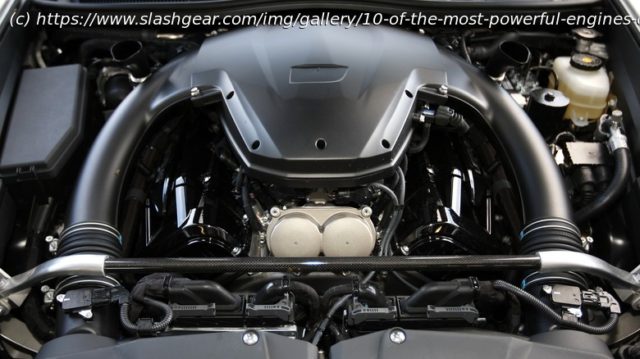Lexus has a more innovative history than many drivers realize, and the evolution of the engines the brand uses tell the complete story.
When you think of power, you probably don’t think of Lexus. Born from a top-secret early-1980s meeting, the brand made a splash when it launched the LS 400 in 1990. The LS 400 offered luxury and comfort on par with contemporary BMW and Mercedes offerings but at less than half the price of a Mercedes S-Class. Sure, it only had 250 horsepower, but it made great use of what it had, with its smooth power delivery winning journalists over regardless.
With that sort of pedigree, you’d be mistaken for thinking that Lexus’ offerings have always focused on the gentler, classier side of the automotive spectrum. And while you wouldn’t be entirely wrong, cars like the 2024 Lexus LC 500 show that there’s more to the brand than luxury four-door cars for the middle-management set. The LC 500 is fun to drive and, most importantly, packs a decent amount of power under the hood, with 471 horses at the command of your right foot.
So, yes: there’s more to Lexus than luxury, and some of the engines Toyota has used for its sub-brand paint that picture well. From the humble 300-horsepower powerplants at the turn of the millennium to the wonderful 550-horsepower V10 powering the Lexus LFA, here’s are the most powerful engines to ever grace a Lexus’ engine bay.4.0-liter 1UZ-FE – 300 horsepower
Covering Lexus’ higher-horsepower engines begins with the one that started it all: the 4.0-liter 1UZ-FE V8. The all-aluminum 1UZ-FE was the engine that powered Lexus’ market-disrupting LS 400, earning plaudits for the smooth way it delivered its 250 horsepower and 260 lb-ft of torque. Sure, it wasn’t as powerful as its pricier rivals, but power isn’t everything.
Even though everyone seemed to love the 1UZ, Toyota didn’t rest on its laurels and continued to improve the engine over the LS 400’s two generations. The second-generation 1995 LS 400 saw numbers increase ever-so-slightly to 260 horsepower and 270 lb-ft of torque alongside a larger and cushier interior. Combine that with a 200-pound weight loss, and the 1995 LS 400 could take its owner to 60 mph in 7.4 seconds: nothing special, but likely plenty fast enough for its target audience.
1998 saw Toyota eke even more power from the 4.0-liter engine, to the tune of 290 horsepower and 300 lb-ft of torque in that year’s LS 400. The LS 400 wasn’t alone: the U.S.-market version of the new-for-1998 second-generation GS 400 also sported the updated 1UZ-FE. Befitting its smaller size and somewhat sportier — by Lexus standards — image, Lexus gave the GS a bit more power. Owners of the new GS had 300 horsepower and 310 lb-ft on tap, allowing them to outrun a contemporary Porsche Boxster — to 60 mph, at least.
[Image by Spanish Coches via Wikimedia Commons | Cropped and scaled | CC BY 2.0]4.3-liter 3UZ-FE – 310 horsepower
The 4.3-liter 3UZ-FE V8 debuted in Lexus’ new third-generation LS 430 and the mid-generation GS 430, both of which the company introduced in 2000 for the 2001 model year. Both cars previously had Toyota’s 4.0-liter 1UZ-FE engine under the hood, and the 3UZ was more of the same — just with a larger displacement.
Toyota kept the 1UZ’s 3.25-inch stroke but bored the engine out to 3.58 inches from 3.44 inches. The result was a minor bump in displacement of 0.3 liters and a similarly small boost to power output. Compared to the 290 horsepower and 300 lb-ft of torque from the final iteration of the LS 400’s 1UZ V8, the new 3UZ-FE made 300 horsepower in the GS 430 and 290 horsepower in the LS 430. Both versions of the new 4.3-liter made more torque, too, with the GS 430 making 325 lb-ft and the LS 430 having 320 lb-ft — so the extra displacement did bring some performance improvements in the LS, even if horsepower output was identical.
The updated engine made peak horsepower and torque lower in the rev range, too, so owners didn’t have to rev the engine as high to enjoy what it had to offer. Despite the minor power upgrade, reviewers loved the new LS 430 and GS 430, and both remain highly regarded to this day.3.5-liter 2GR-FSE – 311 horsepower
Toyota has generally favored eight-cylinder engines for its Lexus cars, but that doesn’t mean there haven’t been a couple of reasonably perky six-cylinder Toyota engines over the marque’s nearly 40-year history. One such engine is the 3.5-liter Toyota 2GR-FSE V6, which the company dropped into the Lexus GS 350’s engine bay in the mid-2000s.
Given that Lexus is a Japanese brand, it probably won’t surprise that the 2GR-FSE’s debut in the 2005 Lexus GS 350 was a Japan-only deal. The V6 was one of two engines Toyota offered in the 2005 GS, with the other being the 4.3-liter 3UZ-FE in the GS 430 we discussed earlier. Interestingly, the smaller engine made a hair more power, with 311 horsepower and 277 lb-ft of torque in both rear- and all-wheel drive setups for the Japanese GS 350.
U.S. Lexus GS buyers had to endure the old 245-horsepower 3.0-liter V6 for an extra couple of years, but their wait thankfully wasn’t too long. Lexus introduced the GS 350 to the American market in 2007, although it had slightly less power than its Japanese counterpart.






